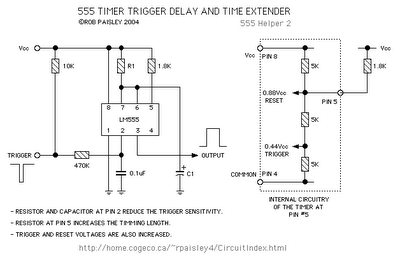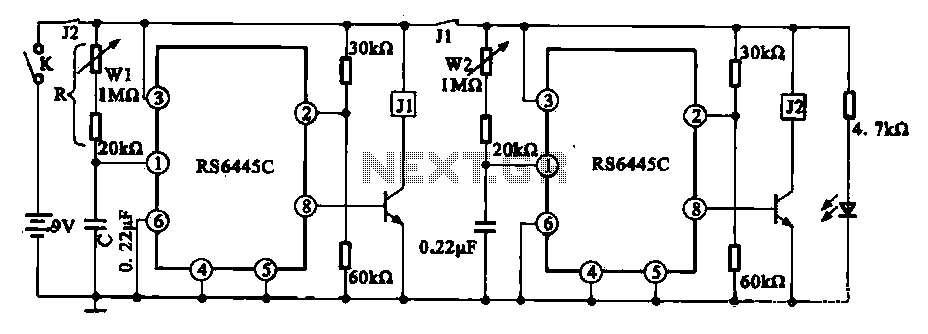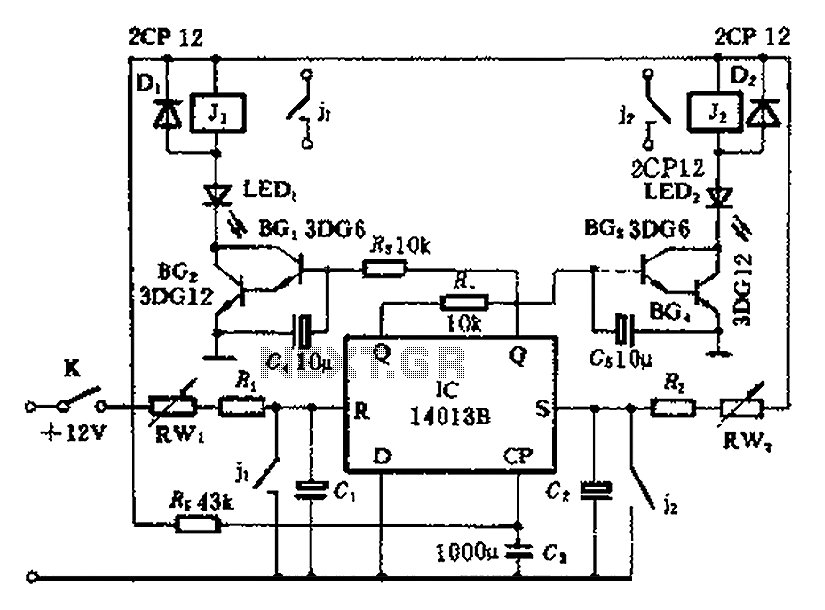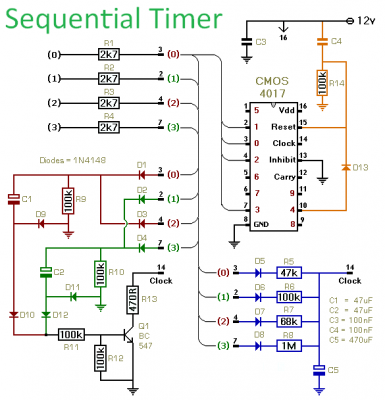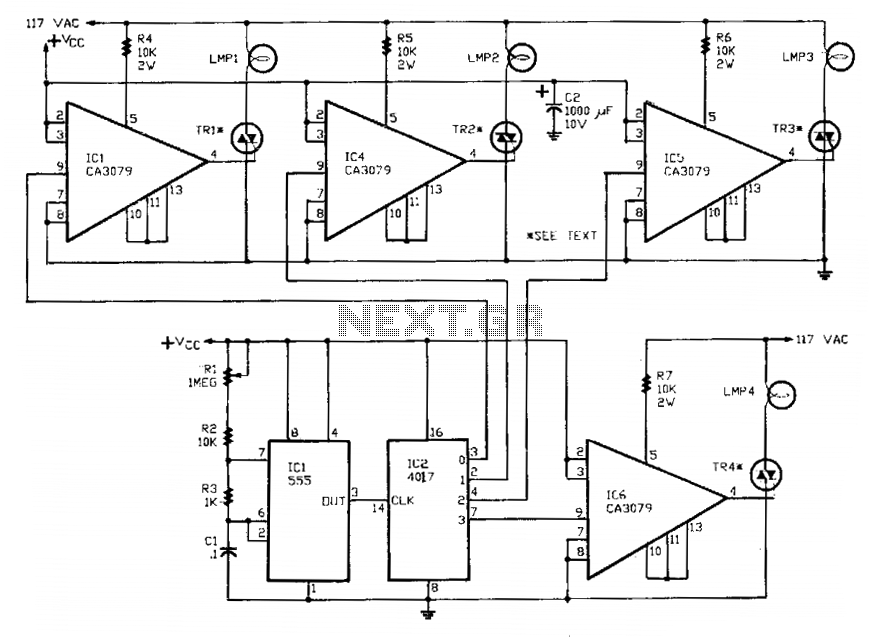
Sequential timing
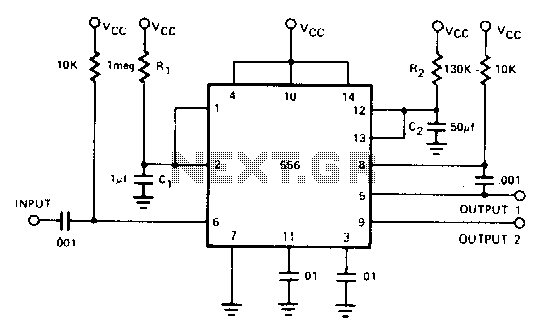
By utilizing both halves of the dual timer, sequential timing can be achieved. The output of the first half is connected to the input of the second half through a 0.1 µF coupling capacitor, enabling this sequential timing. The delay time (t1) is determined by the first half, while the second half has its own delay time (t2). The first half of the timer is initiated by momentarily connecting pin 6 to ground. Once the timing period for the first half expires (as determined by the values of R1 and C1), the second half begins its timing cycle. The duration of this second timing period is determined by the values of R2 and C2.
The described circuit employs a dual timer IC, such as the 555 timer, configured in a monostable mode for both halves. The first half of the timer generates a pulse when triggered, which is determined by the resistor R1 and capacitor C1 values. The output pulse width (t1) is calculated using the formula t1 = 1.1 * R1 * C1. This output is then fed to the second half of the timer through a 0.1 µF coupling capacitor, which allows only the changing voltage to pass while blocking any DC component.
When the output pulse from the first timer ends, it triggers the second timer, which has its timing set by resistor R2 and capacitor C2. The duration of the second timing cycle (t2) can be calculated using the formula t2 = 1.1 * R2 * C2. The entire configuration allows for precise control over two sequential timing intervals, which can be useful in applications such as LED blinking circuits, delay timers, or sequential activation of devices.
The use of a coupling capacitor ensures that the output from the first timer does not interfere with the DC levels of the second timer, maintaining the integrity of the timing intervals. Proper selection of resistor and capacitor values is crucial to achieve the desired timing characteristics, and the circuit can be fine-tuned by adjusting these components. The design is versatile and can be adapted for various applications requiring sequential timing functions.By utilizing both halves of the dual timer it is possible to obtain sequential timing. By connecting the output of the first half to the input of the second half via a 01 µ-F coupling capacitor, sequential timing may be obtained. Delay ti is determined by the first half and h by the second half delay. The first half of the timer is started by momentarily connecting pin 6 to ground When it is timed out (determined by 1R1C1) the second half begins. Its time duration is determined by 1R2C2.
The described circuit employs a dual timer IC, such as the 555 timer, configured in a monostable mode for both halves. The first half of the timer generates a pulse when triggered, which is determined by the resistor R1 and capacitor C1 values. The output pulse width (t1) is calculated using the formula t1 = 1.1 * R1 * C1. This output is then fed to the second half of the timer through a 0.1 µF coupling capacitor, which allows only the changing voltage to pass while blocking any DC component.
When the output pulse from the first timer ends, it triggers the second timer, which has its timing set by resistor R2 and capacitor C2. The duration of the second timing cycle (t2) can be calculated using the formula t2 = 1.1 * R2 * C2. The entire configuration allows for precise control over two sequential timing intervals, which can be useful in applications such as LED blinking circuits, delay timers, or sequential activation of devices.
The use of a coupling capacitor ensures that the output from the first timer does not interfere with the DC levels of the second timer, maintaining the integrity of the timing intervals. Proper selection of resistor and capacitor values is crucial to achieve the desired timing characteristics, and the circuit can be fine-tuned by adjusting these components. The design is versatile and can be adapted for various applications requiring sequential timing functions.By utilizing both halves of the dual timer it is possible to obtain sequential timing. By connecting the output of the first half to the input of the second half via a 01 µ-F coupling capacitor, sequential timing may be obtained. Delay ti is determined by the first half and h by the second half delay. The first half of the timer is started by momentarily connecting pin 6 to ground When it is timed out (determined by 1R1C1) the second half begins. Its time duration is determined by 1R2C2.
